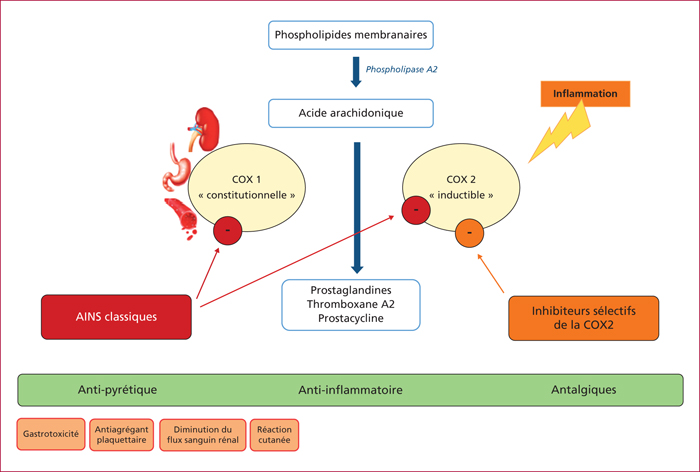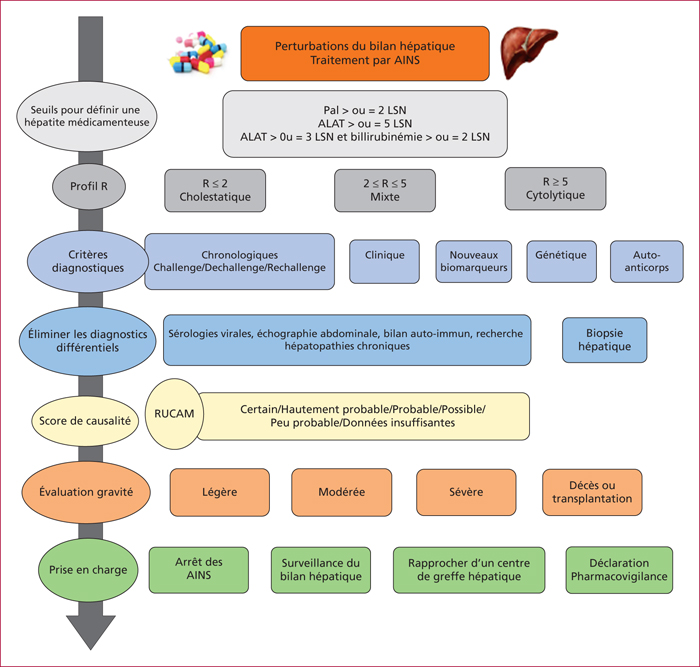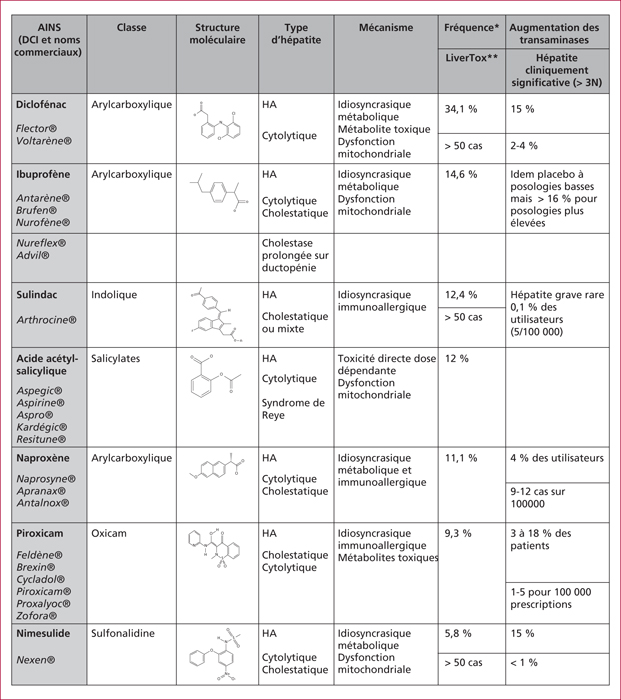Hépato-Gastro & Oncologie Digestive
MENURecent advances in hepatotoxicity of non-steroidal anti-inflammatory drugs Volume 25, issue 3, Mars 2018
- Key words: non-steroidal-anti-inflammatory drug, NSAID, hepatotoxicity, drug-induced hepatitis, pharmacovigilance, pharmacogenetics
- DOI : 10.1684/hpg.2018.1590
- Page(s) : 238-47
- Published in: 2018
Non-steroidal-anti-inflammatory drugs (NSAIDs) are among the most used drugs worldwide. Their indications are multiple, mainly to treat various inflammatory diseases or to relief pain or fever in various acute or chronic situations. Consequently, their use is very variable regarding the administration route, the duration, the dosage, as monotherapy or in combination, as self-medication or as prescription by a care professional. NSAIDs make a heterogeneous pharmaco-therapeutic class of drugs, with various side-effects, gastro-duodenal, intestinal, cutaneous, renal and hepatic. They are responsible for about 10% of cases of drug-induced liver injury. Ninety-nine per-cent of reported cases of hepatotoxicity are caused by 7 NSAIDs. The clinical phenotype is almost exclusively acute liver injury with variable severity from mild and transient increase of transaminases to fulminant hepatitis. The mechanism of liver injury is most frequently an idiosyncrasic reaction with or without immunoallergic reaction, except for aspirin which is dose-depending. The diagnosis of NSAID hepatotoxicity is frequently difficult because of the lack of specific features. It relies mainly on the elimination of other causes and on chronological criteria. A liver biopsy is generally useless and there is no specific biomarkers for NSAID-induced liver injury. There is no specific treatment of liver injury apart to stop the offending drug. In case of past liver injury caused by a NSAID, drugs of the same chemical family should be avoided to prevent cross-hepatotoxicity. In contrast, there is no contra-indication to use a NSAID from another chemical family. The recent identification of genetic markers could facilitate the diagnosis and even more, the prediction of a risk of hepatotoxicity in a near future.
![]() This work is licensed under a
Creative Commons Attribution-NonCommercial-NoDerivatives 4.0 International License
This work is licensed under a
Creative Commons Attribution-NonCommercial-NoDerivatives 4.0 International License




